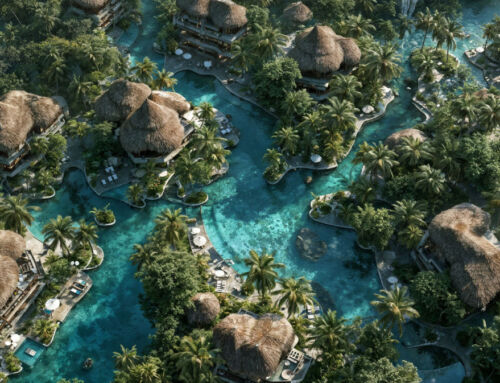Defining a leisure installation project is similar to balancing a scale. The project itself occupies one end and must compensate the weight at the other end, the market, as accurately as possible. An imbalance between the two, would jeopardize the facility’s future success. To define the project, determine its weight and place it on the scale, it is necessary to previously know the market parameters. For each of the projects entrusted to it, Amusement Logic develops a detailed feasibility study, with the aim of achieving that balance.
So, any leisure project faces a pre-existing market against which it must be measured. The parameters of one will determine those of the other, and the balance between the two will guarantee the operation’s success. However, these parameters are obtained in two different ways: through defined records and known-data, and through experience-based estimates. Precisely, more than two decades of work in the leisure industry and several hundred economically-viable built projects, endorse the scope and reliability of the studies that Amusement Logic undertakes for its clients.
Let’s look at an example: on the known-data side, one determining market factor is the size of the general public. On the other, on the estimation side, this factor is completed with the variable of the potential public within it, as well as their habits. We can use a census to establish an area’s population density; the number of inhabitants who live less than 50 km away from the attraction; those who live between 50 and 100 km away, and those who live between 100 and 150 km away. Likewise, it’s also useful to know the number of tourists who visit the destination and their income level. However, this data will be useless unless we estimate the penetration capacity of the planned leisure centre and its attractions for that target audience, as well as the percentage of their repeated attendance. Another example is the facility’s operational days, objective data, in regards to the estimation of peak days of attendance.
Once the aforementioned variables are known and others such as those relating to existing market competitors etc., it’s possible to determine some project magnitudes, such as the business income estimation and operational cost projection. From the latter, it’s therefore easy to establish the expected cash flow at 10 years. So, little by little, by crossing data in a rigorous feasibility study, it’s possible to make a composition of the business size that the leisure project represents. Then decisions must be made and its dimensions conclusively defined. With the feasibility report, the developer will have a realistic document, prepared by an accredited and experienced company, which will allow them to offer the project to potential investors, and/or select suitable sources of financing. All of this without ever losing sight of the ultimate goal: to develop viable leisure projects.







